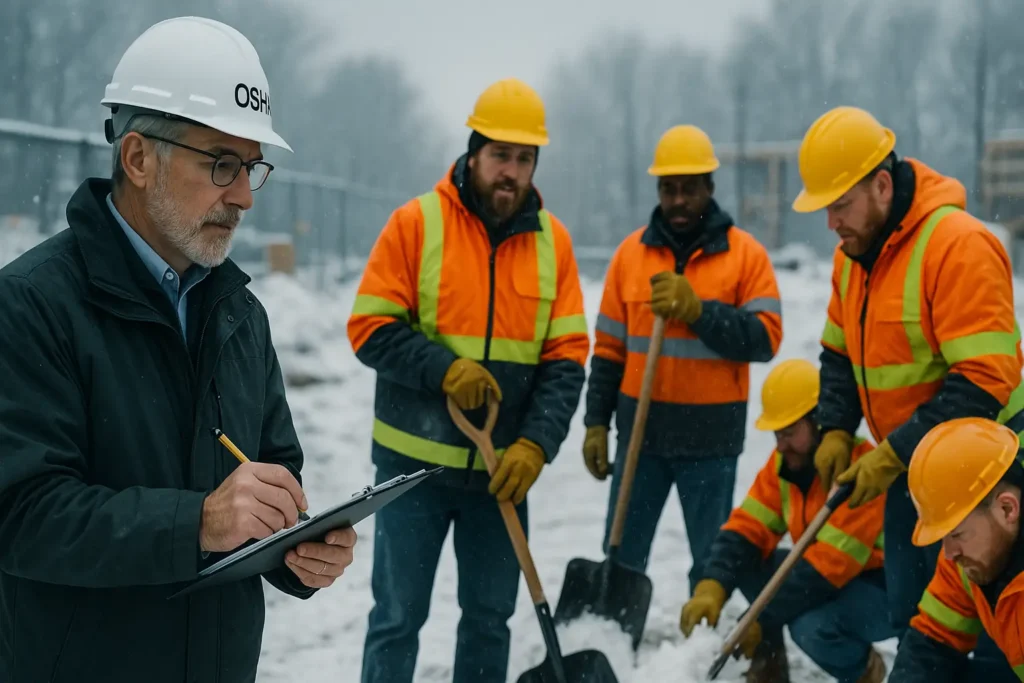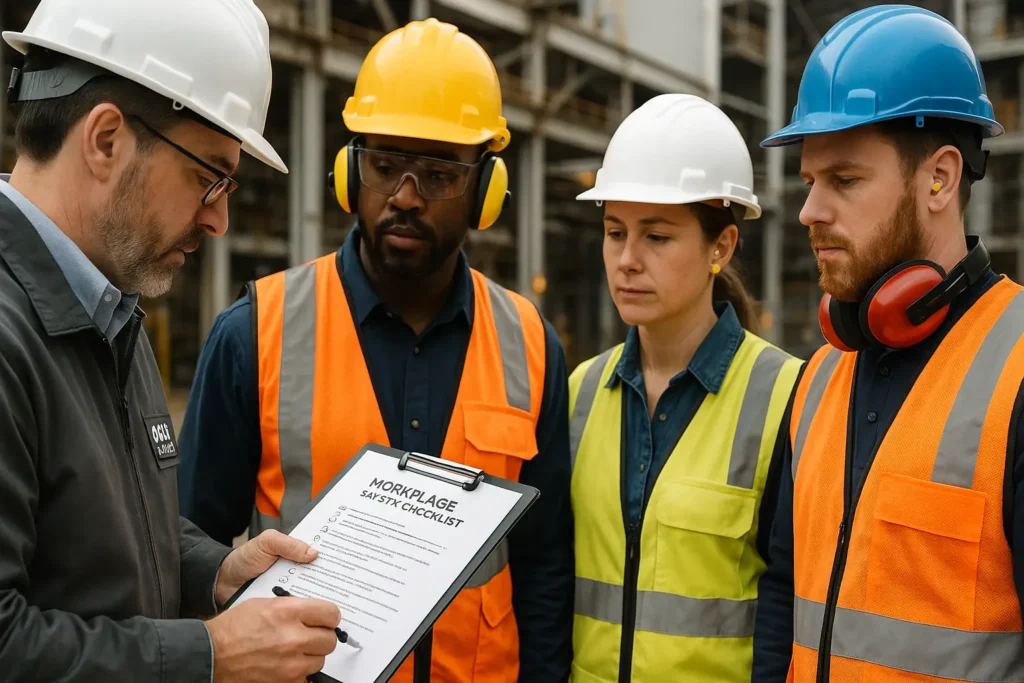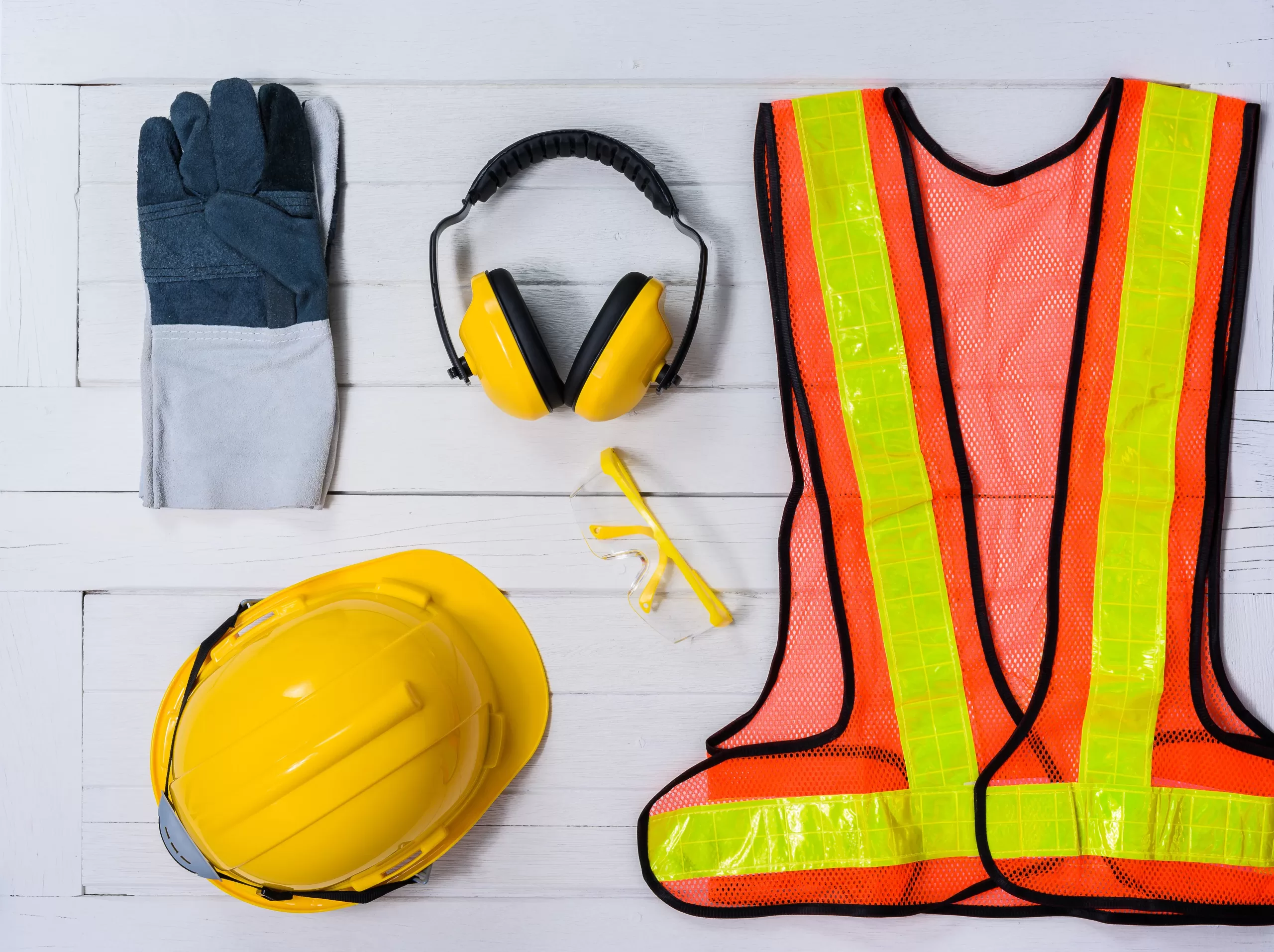PPE in Construction: Types, Safety Tips & OSHA Guidelines
PPE, which stand for Personal Protective Equipment , refers to any piece of equipment used to reduce exposure to hazards that can lead to serious occupational medical complications. The hazards that PPE protects and individual from are chemical, radioactive, electrical, physical and mechanical to name a few. PPE in construction is used to protect from falling equipment, debris and other accidents.
In 2021, more than 2.6 million nonfatal workplace injuries and illnesses were reported in America’s private industries. Many of injuries were related to exposure to hazardous material. These are concerning statistics, emphasising the importance of implementing adequate safety measures, including the use of PPE.
The design, construction, and maintenance of PPE must be done safely, professionally, and efficiently. PPE can include items such as safety glasses, protective boots, gloves, earplugs or ear defenders, hard helmets, respiratory protection, aprons, and full bodysuits. Such equipment should be comfortable to wear for the employees so that they perform their tasks without any difficulties.
Personal protection equipment that is not properly fitted can mean the difference between being properly protected and being exposed to a potentially hazardous material. Employers are responsible for providing employees with personal protection equipment and ensuring that it is used properly.
PPE Safety Tips For Workers
Here’s how workers can adequately wear PPE in construction sites to protect themselves from toxic materials and hazardous environments.
1. Make Sure You Have The Right PPE
As soon as you arrive on-site, check for the necessary personal protective equipment (PPE) to safeguard against hazards. High-visibility clothing and safety boots are vital for visibility and foot protection. Remember, while hard helmets are replaceable, your head isn’t. Regularly inspect and maintain your PPE for optimal performance.
2. Report Any Issues Promptly
If you identify a problem with the PPE, promptly report it to your employer using the appropriate channels, such as filing a report or notifying a supervisor. Swift resolution reduces the risk of PPE malfunction in case of accidents and contributes to a safer work environment.
3. Do Not Temper With Your PPE
Never tamper with or modify PPE or equipment unless expressly authorized. If something seems amiss, report it rather than attempting to fix it yourself. Unauthorized alterations can compromise safety.
4. Prioritize Professional Expertise
Only attempt equipment repairs or adjustments if you have the necessary expertise and authorization. When in doubt, seek professional guidance to ensure safety and adherence. Regular training and updates on equipment handling are essential.
5. Maintain Good Hygiene Practices
Before and after using PPE, practice good hygiene by thoroughly washing your hands and any exposed skin. This simple step can help prevent contamination and minimize health risks.
6. Regularly Replace Damaged PPE
Inspect your PPE regularly for signs of wear or damage, such as tears, cracks, or worn-out straps. Replace any compromised PPE immediately to ensure it provides adequate protection. Regular maintenance and replacements are crucial for your safety.
7. Properly Store And Maintain PPE
Store your personal protective equipment (PPE) in a clean and dry location when not in use. Avoid exposing it to direct sunlight or extreme temperatures, as this can degrade its effectiveness. Regularly inspect and maintain PPE to ensure it remains in optimal condition for maximum protection.
What Typically Is Included In PPE
Here are some consistent feature of protective equipment across different industries.
1. Protection for your head.
The following are some of the benefits and safety measures that can be obtained by wearing your PPE throughout your working hours in the construction industry.
The wearing of hard helmets is a common sight on construction sites. Even if you are just passing through a construction industry or site, you can usually tell who is working there by their distinctive hats. They are designed to protect workers from falling or flying objects that could otherwise hit or enter their skin or other body parts. Many hard hats include optional accessories such as face shields and earmuffs to protect the wearer’s face and ears. Hard helmets should be fitted properly. Those that are either too big or too small for the job are unsuitable for use in the workplace.
2. Earplugs for Hearing Safety
Noise in the construction industry is frequently overlooked as a potential workplace hazard because it is not visible to the naked eye. Every year, 22 million workers in the United States are exposed to potentially hazardous levels of noise.
According to the National Institute for Occupational Safety and Health, approximately 82 percent of workplace hearing loss. Incidents occurred among workers in the industrial sector, which includes assembly lines. The Occupational Safety and Health Administration establishes workplace sound pressure regulations.
To reduce occupational sound-related hazards, the National Institute for Occupational Safety and Health recommends that employee sound levels be reduced to 85 dBA for 8 hours. Earmuffs and earplugs are two common types of hearing protection. Workers can take part in hearing conservation training to protect their ears at the worksites. Please keep in mind that earmuffs are far more effective at reducing high-frequency sound than earplugs are at reducing low-frequency sound.
3. Protection for the Respiratory System
Air filters are essential in workplaces where hazardous compounds are present. It is possible to get harmed by something which is not visible to the naked eye. Respirators, for example, are intended to protect you from dirt, fumes, paint sprays, insecticides, and other harmful materials that can cause long-term damage to your respiratory system. Respiratory protection must be worn when working in an area with airborne pollutants. Rebreathing apparatuses are used in workplaces when there is insufficient air. This method is used when other ventilation control methods are unavailable or insufficient.
Making Worksites Safe and Secure
To avoid occupational injuries, it is critical to use personal protective equipment (PPE) correctly. Choosing not to use PPE in construction and other high-risk industries can be extremely dangerous, especially when PPE can save lives. Unless otherwise specified, personnel are always provided with the necessary protective equipment.
Never be afraid to ask about the personal protective equipment (PPE) provided by temporary staffing companies. You can take part in OSHA 10-hour construction and OSHA 30-hour construction courses to learn more.
Related Posts

Training on a Budget? Find OSHA Training at a Low Price

OSHA Winter Safety Tips for 2025: Protect Outdoor Workers


